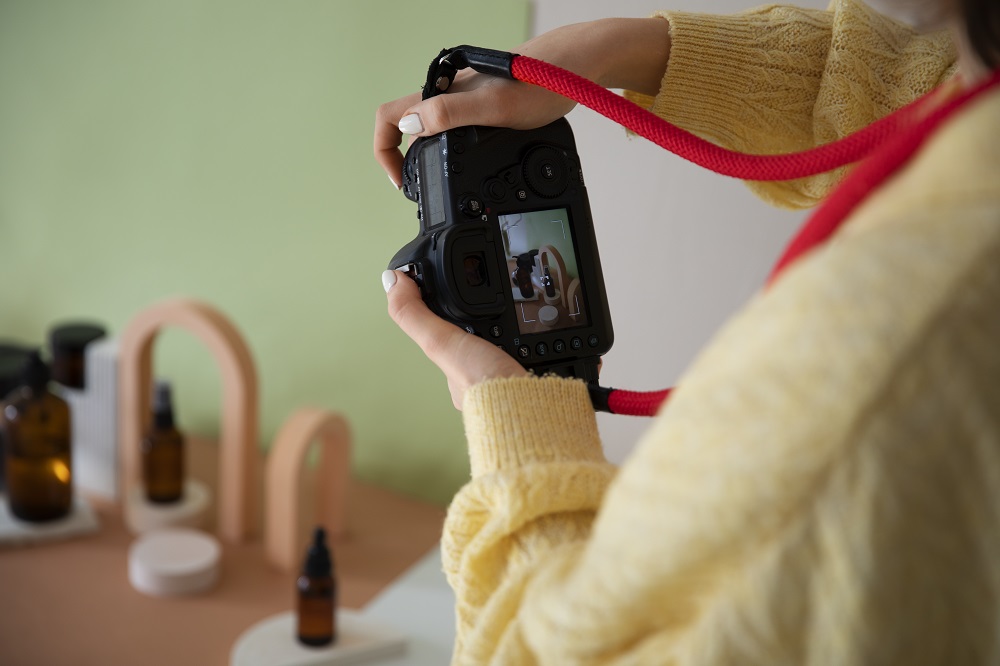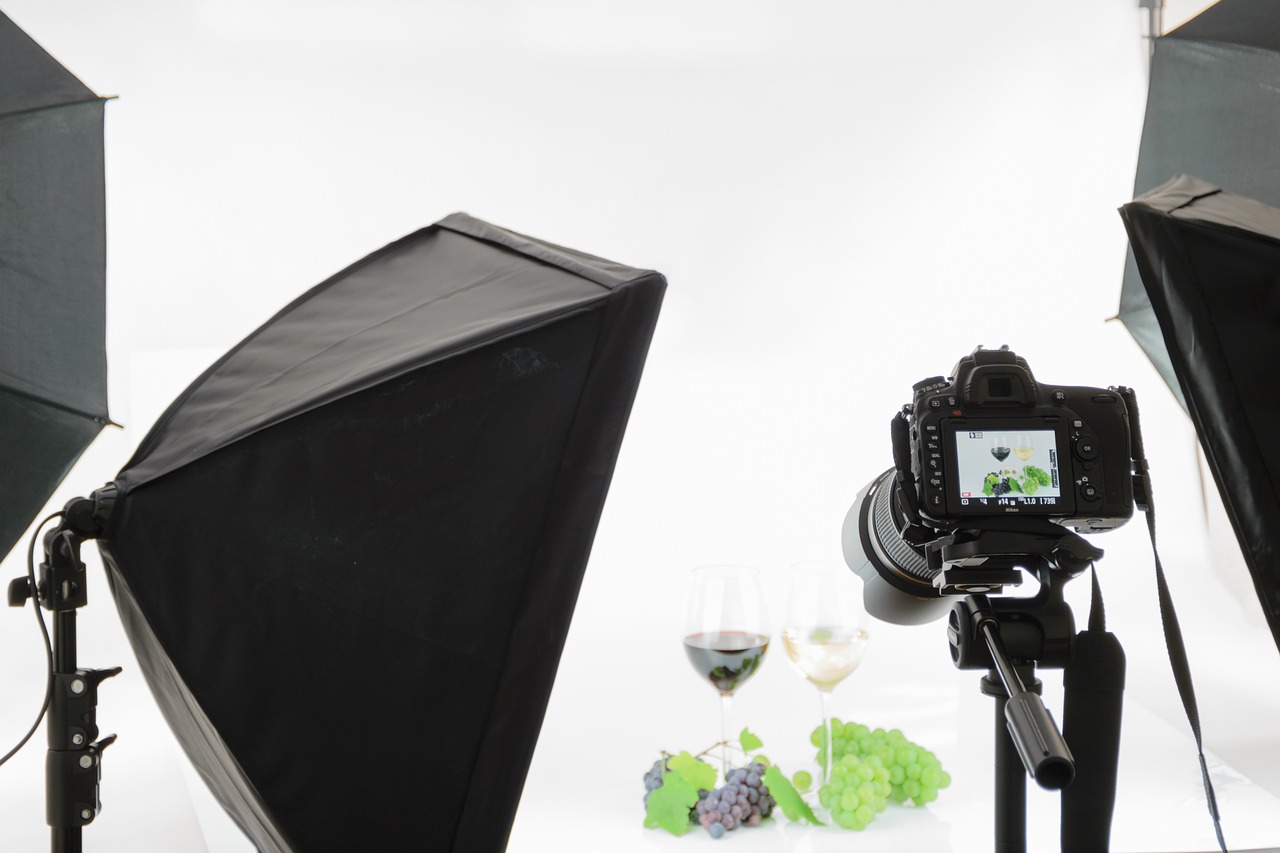Jewellery photography requires acute attention due to its small size and high reflectivity. It asks for a lot of patience and a high degree of control over the camera, lighting, and composition. Practicing jewelry photography can provide you with skills to deal with intricate textures that can be applied to other product photography, making other product photography much easier. Whether you are a professional jewelry photographer or an enthusiast looking to showcase your jewelry collection, this guide will provide you with valuable techniques and tips to elevate your jewelry photography skills.
Jewellery Photography Background and Props
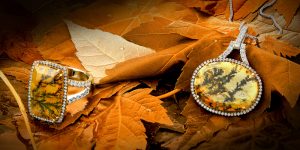
The background is the foremost factor to pay attention to while photographing jewelry. In Jewellery Product Photography, you need to focus on detail and subtlety; hence, the selection of the background is done accordingly.
Choose a clean and uncluttered background to ensure that the focus remains on the jewelry. Neutral backdrops are preferred to add a little contrast to jewelry without introducing too much color. Along with that, choose a matte surface rather than a glossy one to simplify the lighting challenges.
Additionally, consider using props such as jewelry stands, fabric textures, or natural elements like flowers or shells to add interest and context to your compositions.
Camera Setup for Jewellery Photoshoot
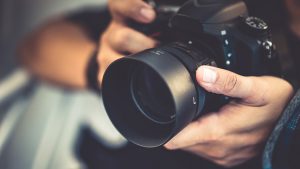
Any camera works well for jewelry photography, but you need to mostly pay attention to the aperture and shutter speed and shoot in RAW. Through this, you can become familiar with the camera you intend to use and quickly adjust the settings you want.
Choose a lens with a wide aperture. Macro mode helps you get close to the jewelry and capture its intricacies without having to crop the pictures. However, macro lenses magnify camera movement, so having a tripod is essential.
Jewellery Photography Lighting Techniques
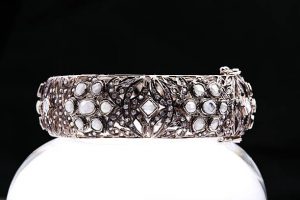
One of the essential Jewellery photo shoot tips is paying attention to proper lighting. Lighting is paramount in jewelry photography. There are three ways to incorporate lighting: natural light, artificial lighting, and lighting accessories.
Natural lighting
Natural light can result in amazing photographic outcomes. You can use window lighting to capture soft and flattering illumination. Or you can opt for reflectors to bounce and redirect light into jewels.
Artificial Lighting
Artificial lighting calls for good lighting control to bring out the finest details in the photograph. You can use two techniques to achieve captivating results: continuous lighting and lightboxes and light tents. Continuous lighting, such as LED panels or softboxes, can create a steady and even illumination, while lightboxes and light tents create a diffused and uniform lighting environment.
Lighting Accessories
Lighting accessories like light diffusers and light reflectors can add depth, sparkle, and a new angle to your jewelry. Diffusers can soften and distribute the light evenly, while light reflectors bounce light into specific areas of jewelry, showcasing its brilliance and intricate details.
Jewelry Photography Composition and Framing
Composition is the placement of your picture and the camera’s angle. Experiment with different compositions to showcase the jewelry in the most visually pleasing way. Explore techniques such as the rule of thirds, leading lines, and symmetry to create visually appealing and balanced images. Pay attention to the placement of focal points, gemstones, and exciting elements within the frame.
Reflection Control
Jewellery surfaces can be highly reflective, presenting challenges for capturing detailed jewelry images. Use polarising filters to reduce unwanted reflections and glare. You can also place paper or a sheet of aluminum foil around the bottom of the camera lens to minimize reflections. Additionally, consider using reflectors or white cards to bounce light and fill in shadows, providing more control over the overall lighting and reflection on the jewelry.
Post-Processing and Editing
Post-processing is an essential step in jewelry photography to enhance the final images. Use photo editing software like Adobe Photoshop or Lightroom to adjust exposure, color balance, and sharpness. Pay attention to small imperfections or dust particles, and use the healing brush or clone stamp tool to remove any distractions.
Read More – Product Photographs Editing With Adobe
Detail Shots and Creative Angles
For stunning jewelry images capture close-up shots to highlight specific elements of the jewelry, such as gemstones, clasps, or intricate designs. Experiment with different angles, such as overhead shots, side angles, or dramatic perspectives, to add variety and visual interest to your portfolio.
Consistency and Branding
If you are photographing jewelry for a brand or creating a cohesive collection, ensure consistency in lighting, background, and styling. This helps create a recognizable and professional brand identity, enhancing the overall presentation of your jewelry photographs.
Conclusion
Jewellery photography requires attention to fine details. The ability to capture a high-quality photograph that showcases the beauty and craftsmanship of the jewelry is the key. By implementing these techniques, you can capture good-quality jewelry photographs while highlighting its best features.

